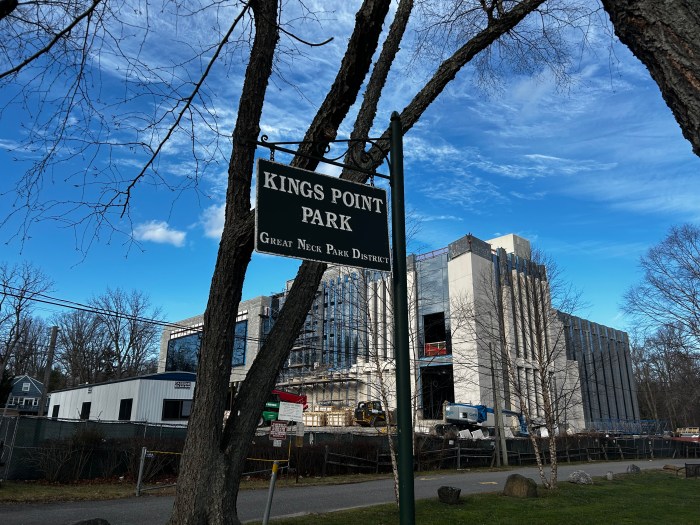Much has been said and written about the 2013 sale of a small piece of land adjacent to the venerable Franklin Mews property—very little of it by the board of trustees. I am speaking out now, personally and not on behalf of the board, because I believe our restraint is allowing a small group to control and distort the narrative in a way that is increasingly hurtful to the village. It also threatens to undermine the progress we are making towards a solution and the chance to restore good relations among neighbors in and around Franklin Court.
I first heard about the potential sale of this small parcel of open space at a public budget work session in February 2013, shortly before I joined the board of trustees. It was also during that period when another, far larger property sale was also discussed: the sale of two village-owned parcels on Cherry Valley Avenue. Both sales came up as the board was trying to avoid a more than 20 percent tax increase in the proposed 2013-14 budget. It was a tough challenge. Our finances were significantly impacted by the economic downturn, pension costs had spiked, and we didn’t know how much of our substantial Sandy-related losses would be reimbursed by federal and state aid.
In public, the potential sale of the Franklin Court property was mentioned as a possible small asset sale that might help fund the cost of a portion of the village capital plan. As I understood it, local residents had expressed an interest in buying the property at its appraised value. Although it was just one of many items that we were discussing, it sounded to me like a win-win. Local residents would form an LLC and would allow other residents in the surrounding area to join them in the acquisition of the parcel. They would gain control of the small greenspace—the “backyard” to the Mews —that had long been a source of underage drinking complaints and had become an unofficial dog run raising safety and sanitary issues. The village would get a capital infusion, save maintenance costs and add the parcel to the tax rolls.
Despite these obvious benefits, in hindsight, do I wish I had asked more questions? Of course. Among other things, I wish I had probed more on how and by whom the property was being used and how a sale would impact the neighborhood. But there was no backroom deal to benefit a favored few—certainly none that I was party to. This was simply a transaction that classically having “sounded like a good idea at the time” was too quickly put in the category of non-controversial items—one of the innumerable non-controversial items with which we deal in the ordinary course. As such, it simply moved through a routine, just-in-time approval process without the discussion or debate that transactions of this kind merit. To be clear, the board has always believed, and continues to believe that the notice and approval for this transaction was legally sufficient. Nevertheless, residents are right to expect better from us, and our newly adopted procedures, providing enhanced public notice and comment opportunity, recognize that.
Having said that, it is worth noting that the sale of the two Cherry Valley parcels—far larger transactions—were initiated under the same budget imperatives, for similar reasons using a substantially similar process. Those sales attracted virtually no public comment despite multiple press reports. No questions about process. No questions about motive. That doesn’t excuse what happened with the Franklin Court property. But it does provide context.
With regard to the Franklin Court property, the pressing question is what happens now. As we have publicly said, the village is in discussions with the purchasers of the property to see if there is a mutually agreeable resolution that will address the concerns that have been raised. We appreciate the purchasers’ cooperation and their desire, which we share, to see an end to the rancor that has divided the neighborhood. While I am hopeful that we can find a way to restore accessibility of the open space to all, whether it will restore goodwill to neighborhood relations is dependent on far more than the desires of the board or the purchasers.
I would close with a plea for perspective. Our system of village government, now nearly 100 years old, relies on local volunteers—not professional politicians—to staff very demanding governmental roles. Village trustees have a broad portfolio of responsibilities that are integral to the effective functioning of village operations. Although attending village board meetings may take only a few hours a month, the preparation that is required together with the demands of our other village responsibilities, require hundreds upon hundreds of hours of village service each year by each of us.
With all of that said, I am not suggesting that any elected leaders—even volunteers—should be immune from criticism. But, at a time when our Property Owners Associations are increasingly struggling to maintain membership and find volunteers to fill their own leadership positions and our POAs are having even greater difficulty filling village-wide positions, it is worth asking for how much longer will we be able to find people willing to make the personal sacrifices required to serve as mayor or on the village board if the job standard is infallibility and the penalty for falling short is vilification, character attack or worse?
Richard V. Silver


































